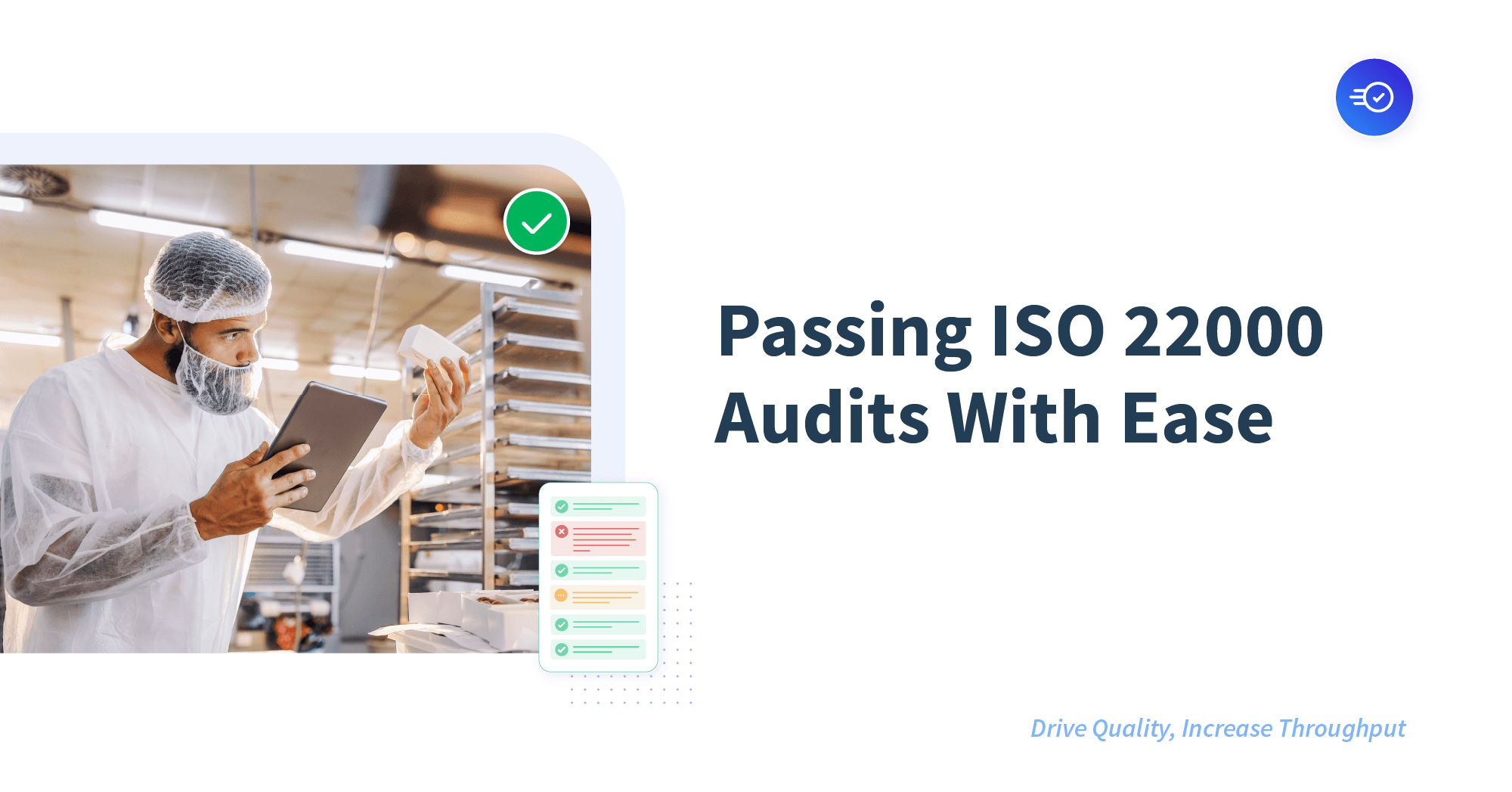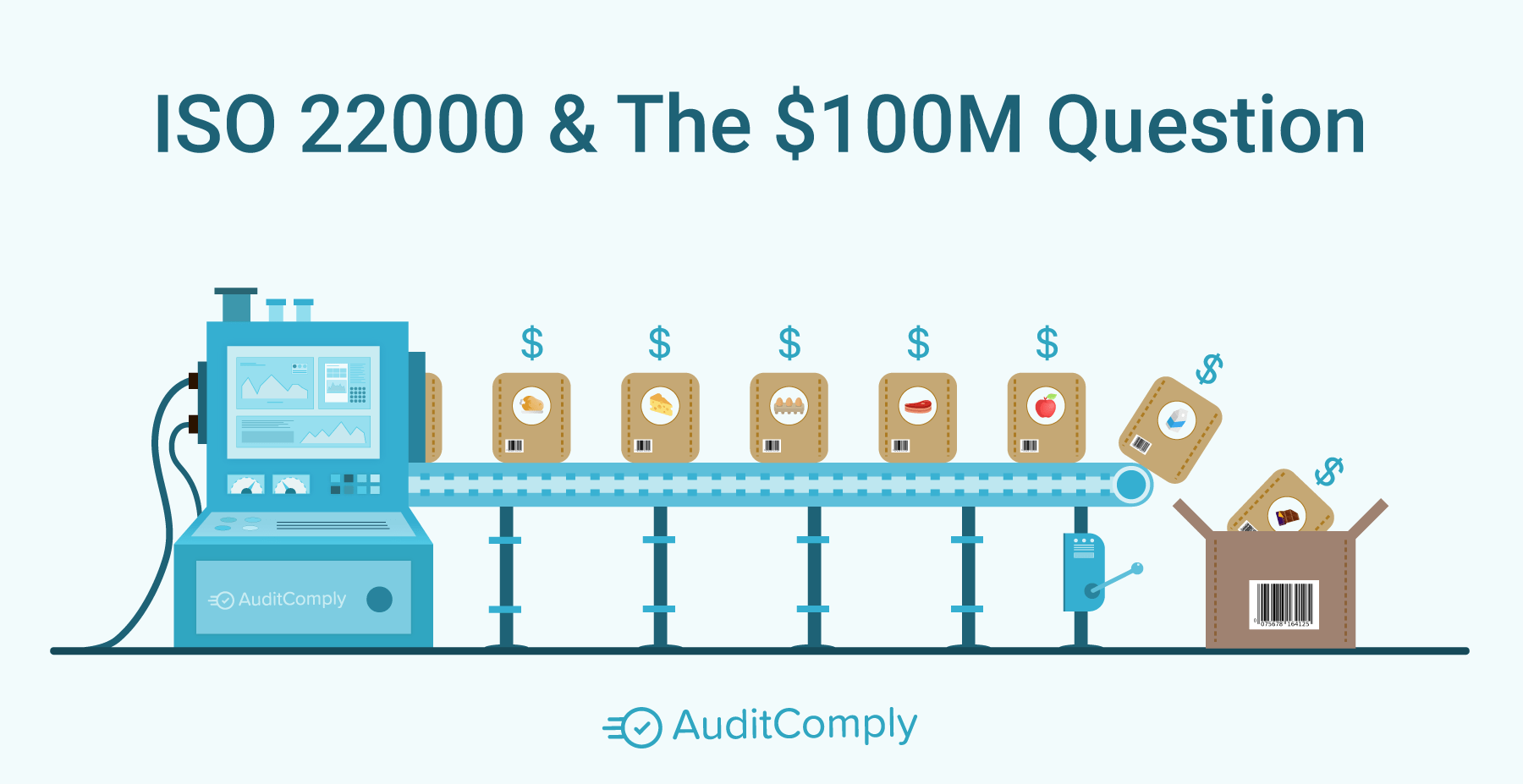
What is an ISO 22000 Audit?
An ISO 22000 audit is a systematic examination of a food safety management system (FSMS) against the requirements set by the ISO 22000 standard. This standard specifies the criteria for a comprehensive FSMS to ensure food safety at every stage of the food supply chain. The audit can be conducted internally within an organization, externally by customers or third-party auditors, or as part of a certification process.
Key Components of ISO 22000
- Interactive Communication: Effective communication across the entire food chain is crucial for identifying and controlling hazards.
- System Management: This component involves comprehensive documentation and management of the FSMS.
- Prerequisite Programs (PRPs): These are procedures, including basic hygiene and operational conditions, necessary to maintain a sanitary environment throughout the food chain.
- Hazard Analysis and Critical Control Point (HACCP) Principles: This includes identifying potential food safety hazards and implementing control measures at critical points in the food supply chain.
ISO 22000 Audit Process
Implementing ISO 22000, a comprehensive food safety management system standard involves a structured schedule that can be broadly divided into several key stages. Here’s a general outline of what an ISO 22000 implementation schedule might look like:
1. Initial Preparation and Planning:
- Conduct a gap analysis to understand the current state of your food safety practices versus ISO 22000 requirements.
- Develop an implementation plan, setting clear objectives, timelines, and responsibilities.
2. Training and Awareness:
- Provide training for all relevant staff on ISO 22000 standards and principles.
- Raise awareness about the importance of food safety and the role each employee plays in the system.
3. Documentation Development:
- Develop a Food Safety Management System (FSMS) manual, including food safety policies and objectives.
- Document procedures and records that meet ISO 22000 requirements.
4. Implementation of Prerequisite Programs (PRPs) and Hazard Analysis:
- Establish and implement appropriate PRPs.
- Conduct Hazard Analysis and Critical Control Point (HACCP) planning.
5. System Implementation and Operation:
- Implement the developed FSMS throughout the organization.
- Conduct internal audits to check the effectiveness of the FSMS.
6. Review and Improvement:
- Review the system regularly for effectiveness and compliance.
- Identify areas for continuous improvement.
7. Pre-Certification Audit (Optional):
- Conduct a pre-certification (or ‘mock’) audit to prepare for the actual certification audit.
8. Certification Audits:
- Undergo a two-stage audit process conducted by a certification body:
- Stage 1: A preliminary, informal review of the FSMS, checking the readiness for the next stage.
- Stage 2: A more detailed and formal compliance audit, checking the FSMS against the standard’s requirements.
9. Post-Certification Activities:
- Address any non-conformities identified during the audit.
- Once certified, maintain and continually improve the FSMS.
- Prepare for surveillance audits (usually annual) to ensure ongoing compliance.
The actual timeframe for each stage can vary depending on the size and complexity of the organization, existing practices, and the resources available. Typically, the entire process from initial planning to certification can take anywhere from 6 months to a year or more. It’s important to note that ISO 22000 is a continuous improvement process, so even after certification, the organization should focus on continually enhancing its food safety practices.
What does an ISO 22000 audit include?
| Section | Key Components |
| Management Responsibility and Commitment | Food safety policy review Management commitment to the FSMS Food safety team structure and responsibilities |
| FSMS Planning | FSMS adequacy for food safety Objectives and performance metrics Risk management procedures |
| Resource Management | Infrastructure and work environment Personnel competence and training External resources and services |
| Prerequisite Programs (PRPs) | Facility cleanliness and sanitation Pest control measures Employee health and hygiene |
| Traceability System | Product identification and traceability Product recall procedures |
| Emergency Preparedness and Response | Emergency plan effectiveness |
| Hazard Analysis and Critical Control Points (HACCP) | Hazard analysis Critical Control Points (CCPs) monitoring Corrective actions for hazards |
| Control of Monitoring and Measuring | Monitoring and measuring devices and methods Food safety control measures |
| Validation, Verification, and Improvement of the FSMS | Validation and verification procedures Internal audits and management reviews Continuous improvement processes |
| Internal Audit | Internal audit program effectiveness Follow-up actions from internal audits |
| Product Handling and Preparation | Product handling, preparation, packaging, distribution processes Storage and transportation conditions |
| Documentation and Record Keeping | Documentation appropriateness and maintenance Food safety and compliance records |
ISO 22000 vs FSSC 2200 vs BRC
| Criteria | ISO 22000 | FSSC 22000 | BRC/BRCGS |
| Certification Process | Two-stage onsite audit | Two-stage onsite audit | One-stage onsite audit |
| Certification Approach | Combines elements of ISO 9001 with a focus on food safety | Framework for implementing a process-based FSMS | Prescriptive guidelines for food safety procedures |
| Scope of Requirements | Includes PRPs and a HACCP-specific food safety plan | Builds upon ISO 22000 with additional specific requirements | Every 6 or 12 months, based on the assessed grade |
| Nonconformity (NC) Closeout / Deadline for Corrective Actions | Within 14 days | Within 30 days | Within 28 days |
| Recertification Period / Validity of Certificate | Every 3 years, with annual surveillance audits | Every 3 years, with annual surveillance audits | Every 6 or 12 months, based on assessed grade |
| Recognized by the Global Food Safety Initiative (GFSI) | No | Yes | Yes |
Benefits of ISO 22000
1. Enhanced Food Safety: ISO 22000 provides a framework for effectively managing food safety risks, incorporating principles of Hazard Analysis and Critical Control Points (HACCP). This enhances food safety at all stages of the food chain.
2. Improved Customer Confidence: Certification to an internationally recognized food safety standard can increase customers’ trust in your products, as it demonstrates a commitment to food safety and quality.
3. Global Recognition: ISO 22000 is recognized worldwide, which can facilitate easier access to global markets and may be required by some international buyers.
4. Integration with Other Management Systems: ISO 22000 is designed to be compatible with other ISO management system standards, making it easier to integrate with existing systems like ISO 9001 (Quality Management) or ISO 14001 (Environmental Management).
5. Systematic Management of Prerequisite Programs (PRPs): The standard requires the establishment of effective PRPs, which help in maintaining basic conditions and hygiene practices to ensure food safety.
6. Risk Management: It encourages a systematic approach to identifying food safety hazards and controlling them through pre-defined measures, thereby reducing the likelihood of food safety incidents.
7. Legal Compliance: Adherence to ISO 22000 helps ensure that your business complies with applicable food safety laws and regulations, thereby reducing the risk of legal non-compliance and associated penalties.
8. Continuous Improvement: The standard promotes continuous improvement of food safety processes, which can lead to enhanced performance over time.
9. Stakeholder Confidence: By demonstrating a real commitment to food safety, you can enhance the confidence of stakeholders, including customers, employees, and suppliers.
10. Efficient Resource Management: Implementing ISO 22000 can lead to more efficient use of resources, reducing waste and improving cost management.
Overall, ISO 22000 helps organizations in the food chain to demonstrate their ability to control food safety hazards and ensure that food is safe for consumption, thus providing a competitive advantage and supporting sustainable business growth.
AuditComply’s ISO 22000 Tool: Streamlining Audit Preparation and Certification Efforts
Gaining ISO 22000 certification is a detailed process that demands meticulous documentation, record-keeping, and organization-wide coordination. Traditional methods like pen and paper often prove cumbersome, especially when auditors need to digitize data and manually transfer audit reports. Leveraging the right technology can facilitate a smoother implementation and optimize the process of addressing food safety risks. Utilizing AuditComply’s mobile application, you can:
- Efficiently Document Crucial Data: Utilize handheld devices to record significant information effortlessly.
- Capture and Detail Evidence: Take photos of hazards and non-compliant items, with options to annotate for clearer understanding.
- Incorporate Comprehensive Observations: Attach detailed notes to provide context and actionable recommendations
- Prompt Corrective Actions: Assign tasks for immediate correction of identified food safety risks.
- Secure Data Storage in the Cloud: Safely store and retrieve collected data. Access a sample ISO 22000 report in PDF format
- Real-Time Report Generation and Sharing: Create, distribute, and access up-to-date reports within your organization instantly.
- Scheduled Audits for Consistent Safety: Plan ISO 22000 audits regularly to maintain safety standards and proactively identify potential food safety issues
- Analyze Trends from Audit Outcomes: Evaluate the results of internal audits to discern safety trends and areas for improvement.
Download from AuditComply’s extensive library of ISO 22000 PDFs and digital checklists, transformed into user-friendly mobile checklists. These tools are designed to assist in preparing for ISO 22000 certification and pinpointing gaps in your current system. Additionally, we offer HACCP and GMP templates, integral to the development of a comprehensive FSMS.


